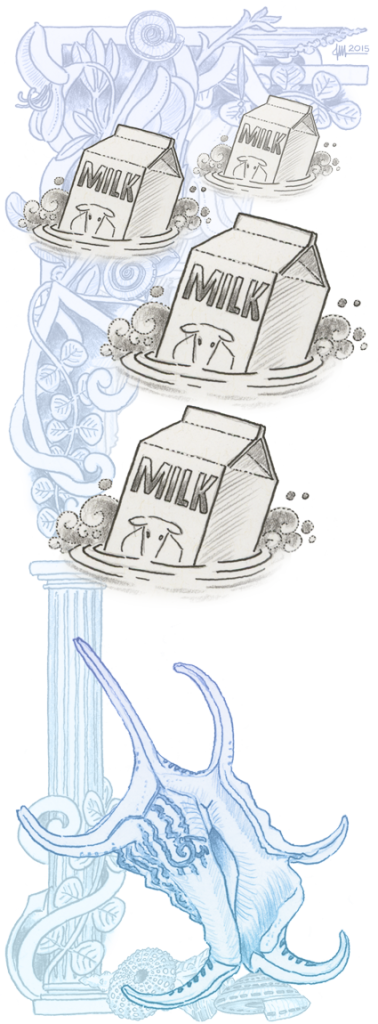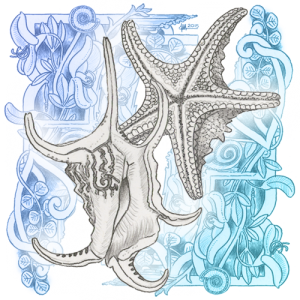Strange White Ocean:
Early Dutch trading ships that made their way out to the spice islands in the Far East encountered the milky sea phenomenon of the ocean being white in color. The unusual coloring had nothing to do with a sandy bottom, the ocean was simply milky white colored for miles on end. They referred to the phenomenon as a “winter sea” likely because it represented fields of snow. At night the sea would take on an eerie bluish glow. Recently scientific analysis has revealed that these large areas of sea water are filled with bioluminescent bacteria causing the ocean to uniformly glow.

Details the French Corvette Observed
In 1861 the French corvette Capricieuse witnessed this curious phenomena 20 miles South East of the island of Amboyna. Captain Trebuchet conducted an investigation of the phenomena he encountered. Newspapers reported he found the whiteness was generated by something he referred to as rings of luminous animalculae. Captain Trebuchet discovered this from a sample of 4 or 5 litres of sea water. He described the luminous animalculae as follows: “They were as slender as a hair of a child’s head, and adhered to one another endways to the number of 20, forming little chaplets.” He reported his finding to the Academy of Science in France, but whether they were followed up is not known. The English Royal Asiatic Society discussed the matter of the white seas off the Persian Gulf area as far back as 1837. At a meeting of the association, Mr. Newnham read an extract from the 1832 journal of Lieut. H. Dawson who saw this milky sea effect during his voyage from Bombay to Muscat. The sea turned as white as milk and had a bluish glow at night. He did not observe any animalculae or phosphoric effects to account for the phenomena. Dawson noted that as far back as 1810 a Colonel Briggs saw this same peculiarity making a southern passage to Muscat. He seemed to have encountered it so often that he simply recorded in his journal, “white water.”
References:
Wikipedia, Milky Seas Effect
Western Daily Press, Thursday 20 June 1861, pg. 3. - Capricieuse sighting.
Morning Post, Tuesday 05 December 1837, pg. 6. - Royal Asiatic Society Meeting discussing the Milky Sea Effect.
